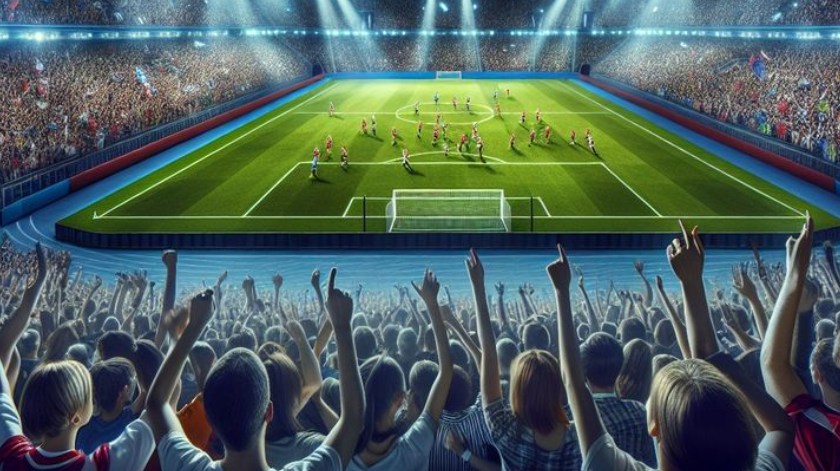Not all matches are created equal — even when they’re played by the same teams. Ask any player, coach, or seasoned fan: football is as much about the environment as it is about tactics. The roar of the crowd, the shape of the pitch, the weather, even the tension in the air — they all matter. Sometimes more than we think.
And no, this isn’t just romanticism. It’s measurable. It’s repeatable. And in the right conditions, it’s unstoppable.
So what is it about a stadium — a simple structure of concrete and steel — that can twist the story of a game?
Let’s dig into what happens beyond the tactical boards and stat sheets.
The Home Advantage Is More Than a Myth
We’ve all heard the phrase: “home advantage.” But what does that really mean?
It’s not just that players are sleeping in their own beds the night before. It’s the way they walk into a stadium they know like the back of their hand. It’s the exact pressure of the turf under their boots. The sightlines. The sound of 40,000 people chanting your name — not the opponent’s.
Even referees aren’t immune. Multiple studies have shown that home teams tend to receive fewer yellow cards and get more favorable decisions — subtle, subconscious shifts driven by crowd pressure.
When a team plays at home, they’re not just playing football — they’re performing for believers.
It Starts in the Stands
The fans are often called the “12th man,” but it’s more than metaphor. They’re fuel.
A team down 1–0 in the 70th minute at home might push with a new kind of energy — urged on by the drums, the flags, the urgency in every chant. That same team, away from home, might fold.
It’s no coincidence that some of the most famous comebacks in football history happened at home — Camp Nou, Anfield, Bernabéu. Not because the teams played differently. But because they believed differently.

The Pitch Itself: Quiet but Influential
Yes, even the grass matters.
Not all pitches are the same. Some are tighter, forcing more physical duels. Others are wide, perfect for pacey wingers. The length of the grass, the slickness after watering, the type of turf — they subtly shape how the ball moves, how fast attacks build, how players position themselves.
A team that presses aggressively benefits from a dry, fast pitch. A possession-heavy team may want a slower surface. These details are often overlooked by casual fans, but they are strategically prepared — and exploited.
🔍 Quick Snapshot: Stadium Elements That Shift Outcomes
- Crowd energy → boosts morale, increases pressure on referees
- Familiarity → players know the pitch, angles, and even the locker room
- Travel fatigue → affects away teams, especially in midweek fixtures
- Acoustics → enclosed stadiums amplify chants and affect communication
- Pitch condition → directly influences tempo, style, and decision-making
And Yes, It Affects the Odds Too
Bookmakers are well aware of all this. That’s why home teams usually get a slight edge in the odds, even when the teams are evenly matched on paper.
If you’re browsing through betting platforms, you’ll notice that the spread tilts ever so slightly toward the hosts — not just because of statistics, but because of psychology. For bettors, this becomes a crucial consideration: is the home boost enough to offset a weaker squad? Will the away team struggle in a high-pressure environment?
Online betting platforms now offer even more nuanced markets tied to location — including first-half performance, crowd-influenced booking odds, and live shifts that react to crowd momentum.
It’s not just about who’s better. It’s about where they’re playing — and what it feels like.
In the End, Football Is a Human Sport
Despite all the data, football remains beautifully unpredictable — because it’s played by people. People who get nervous. People who feel adrenaline. People who hear the roar of a stadium and suddenly believe they can do more.
A goal is a goal. But a goal scored in front of a packed, shaking home end? That’s something else entirely.
And when the final whistle blows, the scoreline might reflect the tactics — but the story?
The story belongs to the stadium, the pitch, and the people in the stands.





